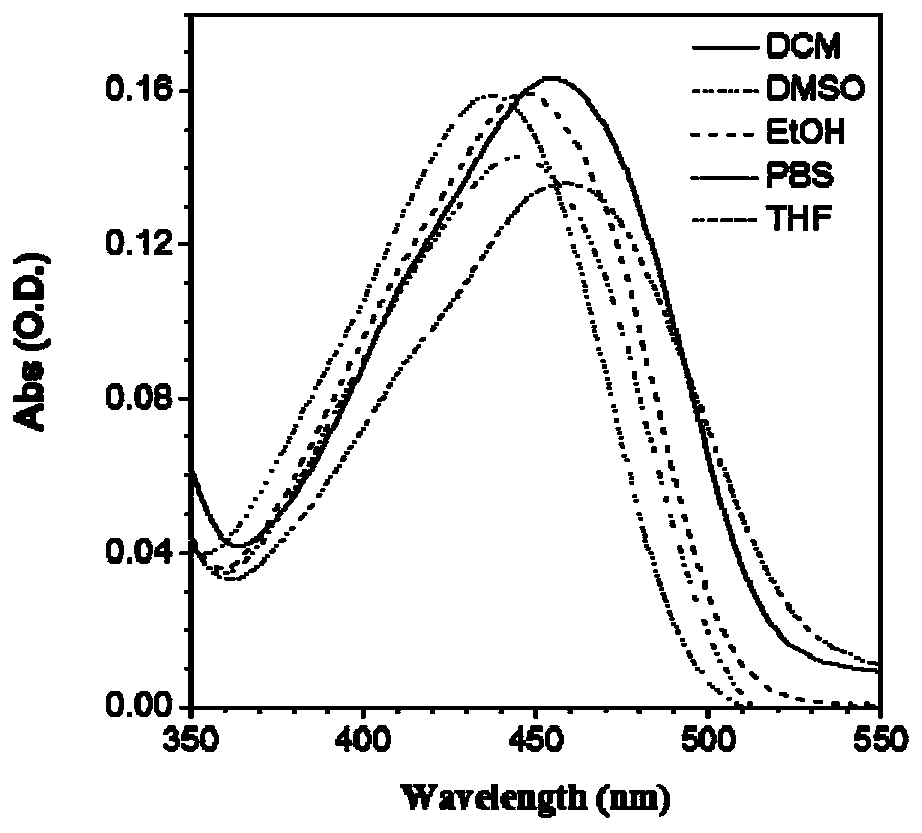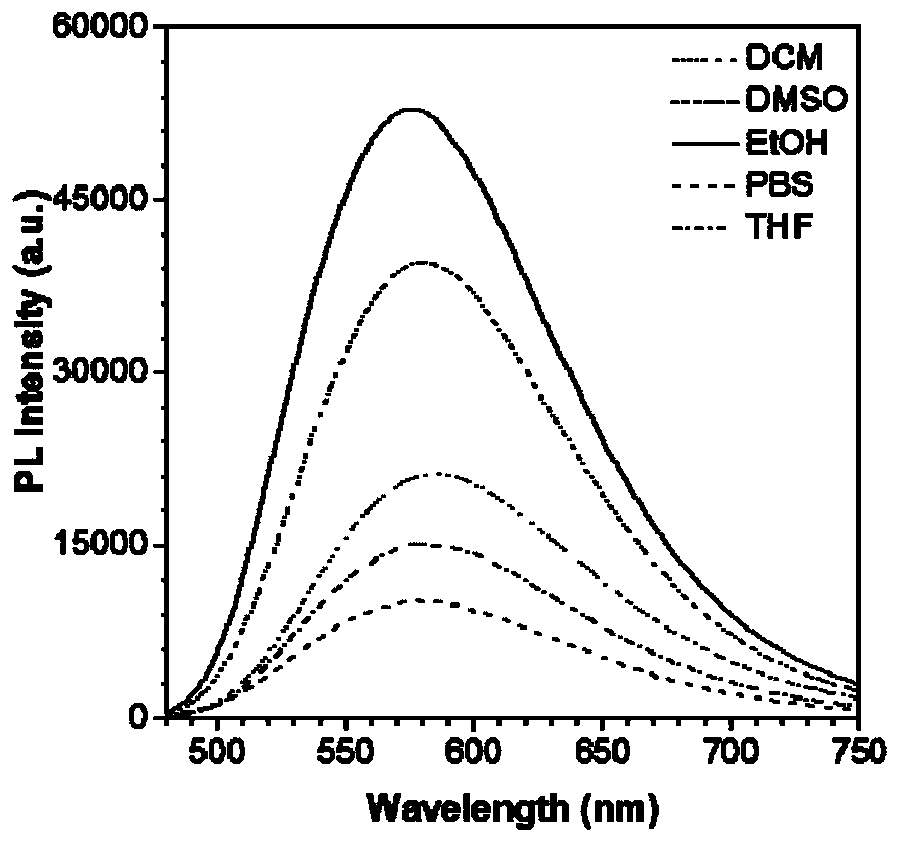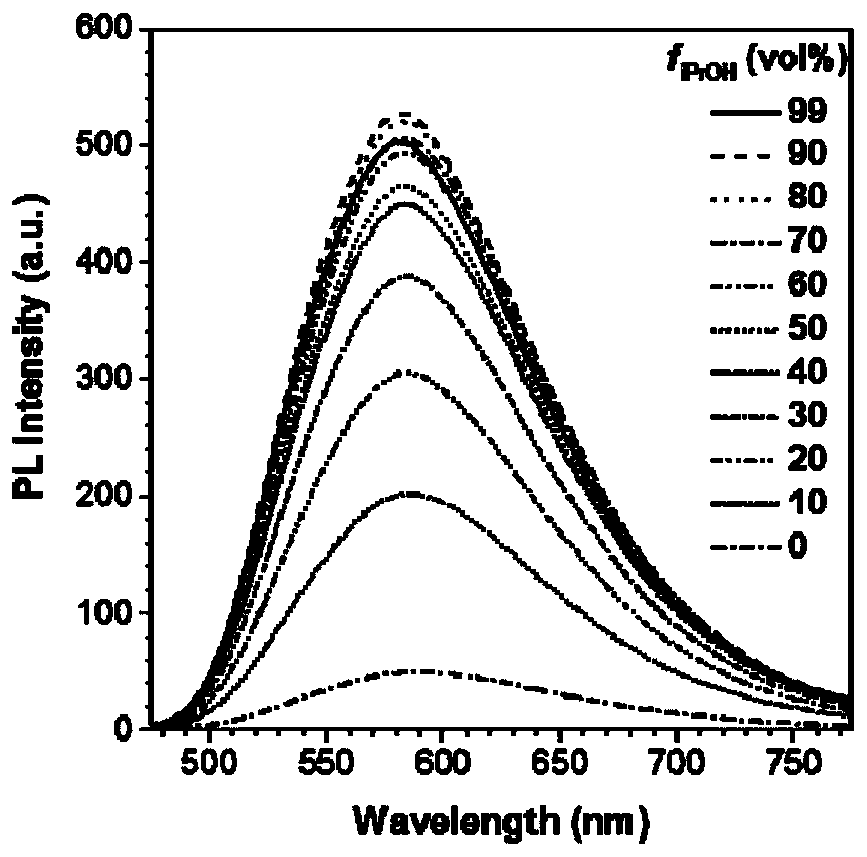Small-molecule fluorescent probe and application thereof in chromosome analysis and cytogenetics
A fluorescent probe and small molecule technology, applied in the field of biochemistry and chemical biology detection, can solve problems such as hindering the observation of g-bands and telomeres, chromosome identification and gene locus positioning difficulties
- Summary
- Abstract
- Description
- Claims
- Application Information
AI Technical Summary
Problems solved by technology
Method used
Image
Examples
Embodiment 1
[0056] Embodiment 1: the preparation of trifluoroacetic acid dihydroisoquinone derivative IQ-IQ, its synthetic route is as follows:
[0057]
[0058] 1-Phenyl-4,9-dihydro-3H-pyridine[3,4-β]indole (ID, 123.1mg, 0.5mmol), 1,-2-diphenylacetylene 2a (89.1mg, 0.5mmol), dichloro(pentamethylcyclopentadienyl) rhodium (III) dimer [(Cp*RhCl 2 ) 2 , 1.05 mg, 0.5% mmol], AgOOCCF 3 (165.6mg, 0.75mmol) and Cu(OAc) 2 (90.8 mg, 0.5 mmol) was added to a 25 mL round bottom flask, followed by 5 mL of absolute ethanol. N 2 Heating to reflux under protection for 30 minutes stopped the reaction, filtered through 100-200 mesh silica gel, and washed with ethanol. The organic phase was collected, and the organic solvent was distilled off under reduced pressure. The residue was separated and purified by 200-300 mesh silica gel column chromatography, and eluted with dichloromethane / methanol=20:1 (V / V) to obtain 230.7 mg of pure trifluoroacetate Salt dihydroisoquinate derivative ID-IQ. The prod...
Embodiment 2
[0060] Embodiment 2: the preparation of trifluoroacetic acid dihydroisoquinone derivative 3aa, its synthetic route is as follows:
[0061]
[0062] 1-phenyl-3,4-dihydroisoquinone 1a (104mg, 0.5mmol), 1,-2-diphenylacetylene 2a (89.1mg, 0.5mmol), dichloro(pentamethylcyclopentadiene Alkenyl) rhodium (III) dimer [(Cp*RhCl 2 ) 2 , 1.05 mg, 0.5% mmol], AgOOCCF 3 (165.6mg, 0.75mmol) and Cu(OAc) 2 (90.8 mg, 0.5 mmol) was added to a 25 mL round bottom flask, followed by 5 mL of absolute ethanol. N 2 Heating to reflux under protection for 30 minutes stopped the reaction, filtered through 100-200 mesh silica gel, and washed with ethanol. After collecting the organic phase, the organic solvent was distilled off under reduced pressure, and the residue was separated and purified by 200-300 mesh silica gel column chromatography, and eluted with dichloromethane / methanol=20:1 (V / V) to obtain 219 mg of pure trifluoroacetic acid Salt Dihydroisoquininium salt derivative 3aa. The product...
Embodiment 3
[0064] Embodiment 3: the preparation of trifluoroacetic acid dihydroisoquinone derivative 3ab, its synthetic route is as follows:
[0065]
[0066] 6-methoxyl-phenyl-3,4-dihydroisoquinone 1b (118.7mg, 0.5mmol), 1,-2-diphenylacetylene 2a (89.1mg, 0.5mmol), dichloro( Pentamethylcyclopentadienyl) rhodium (III) dimer [(Cp*RhCl 2 ) 2 , 1.05 mg, 0.5% mmol], AgOOCCF 3 (165.6mg, 0.75mmol) and Cu(OAc) 2 (90.8mg, 0.5mmol) was added to a 25mL round bottom flask, and then 5mL of absolute ethanol was added. N 2 Heating to reflux under protection for 30 minutes stopped the reaction, filtered through 100-200 mesh silica gel, and washed with ethanol. After collecting the organic phase, the organic solvent was distilled off under reduced pressure, and the residue was separated and purified by 200-300 mesh silica gel column chromatography, and eluted with dichloromethane / methanol=20:1 (V / V) to obtain 253.2 mg of pure trifluoroacetate Acid dihydroisoquinate derivative 3ab. The product ...
PUM
| Property | Measurement | Unit |
|---|---|---|
| particle diameter | aaaaa | aaaaa |
| particle diameter | aaaaa | aaaaa |
Abstract
Description
Claims
Application Information
 Login to View More
Login to View More - R&D
- Intellectual Property
- Life Sciences
- Materials
- Tech Scout
- Unparalleled Data Quality
- Higher Quality Content
- 60% Fewer Hallucinations
Browse by: Latest US Patents, China's latest patents, Technical Efficacy Thesaurus, Application Domain, Technology Topic, Popular Technical Reports.
© 2025 PatSnap. All rights reserved.Legal|Privacy policy|Modern Slavery Act Transparency Statement|Sitemap|About US| Contact US: help@patsnap.com



